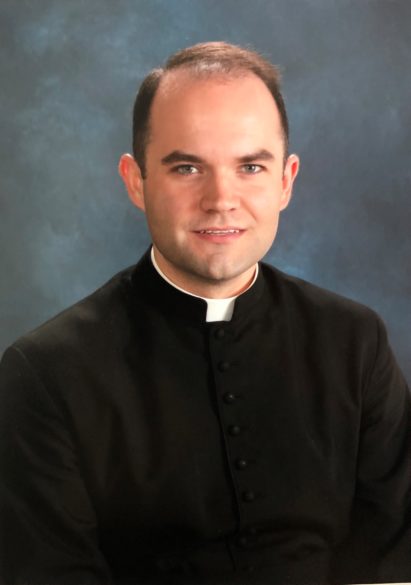IN SPIRIT AND TRUTH

By Father Aaron Williams
Since being ordained last year, one thing I have noticed is the consistent negative reaction people will give to the use of incense at Mass. I think it is safe to say most people have no opinion, but those that do make sure you know it! This past month I have been living north of Chicago at the Liturgical Institute in order to spend time totally devoted to research and writing my master’s thesis. During this time away from the parish, I decided on Sundays to go and concelebrate the Divine Liturgy of St. John Chrysostom at a local Byzantine Catholic Church.
Most people in Mississippi have never experienced a non-Roman Catholic liturgical rite, but one feature of the Eastern rites is their consistent use of incense. It is used in every liturgy — and in large amounts. I’d leave the church every Sunday and my vestments would smell of incense well into the rest of the week.
Incense has been part of the worship of God from the earliest time there was a prescribed and formal way to worship God. In the book of Exodus, God not only commands Moses to use incense in worship, but He even goes on at length as how this incense is to be made (Exodus 30:34-38). Incense is one of the only elements from Old Testament worship which remained entirely unchanged in Catholic worship all through the centuries. It is spoken of in the psalms, “Let my prayer arise like incense, and the lifting up of my hands as an evening sacrifice!” (Psalm 141:2).
Traditionally, incense has been understood in two ways. Firstly, it is a literal sacrifice. Incense is precious and usually a bit expensive. And, once you burn it the incense is gone. We totally give it over to God as a complete offering to Him. It may seem small, but we can think about all the small things we do for loved ones that may to others seem useless: buying fresh flowers or sending greeting cards. We do this in the liturgy through incense, real wax candles and freshly cut flowers. These are small offerings of our heart.
But, incense is also such an effective sign. It fills the space — evoking the image of the dark cloud which filled the Solomon’s temple in Jerusalem at its dedication. “When the priests came out of the holy place, a cloud filled the house of the Lord, so that the priests could not stand to minister because of the cloud; for the glory of the Lord filled the house of the Lord” (1 Kings 8:10-11). And, as mentioned in the psalm above, it gives a visualization to us of our prayers rising up to heaven — which is moving to consider especially in high points like the Offertory of the Mass when we should already be pouring forth all the prayers we want to bring to the Mass or at the commendation of a funeral Mass when the community pours out prayers for the deceased.
Incense is always part of the solemn liturgy. Before the reform of the liturgy in 1969 it was required in all high Masses — which was any Mass in which texts of the Mass were sung. The rubrics of the current Missal are very clear that incense is still a part of the solemn liturgy, though it expounds upon that by saying that it can be used gradually and need not be used in a sort of all-or-nothing manner from Mass to Mass. So, how should it be used today?
For most parishes in our area, incense comes out one day a year: Easter and only at the Easter vigil. Some parishes might use it for the really big feast days. But, thinking about all that incense means and how many centuries it has been used in the worship of God, surely we can find a way to use it on more than one occasion a year?
In other places, including many of the parishes I visited in New Orleans while in seminary, incense is used at one Mass every Sunday—the main Mass with the choir. I find this a good practice since, on one hand it ensures that this sacred sign is richly used in a parish, while also giving people an idea of what to expect from week to week.
You start to get used to the idea of the 10:30 a.m. Mass, for example, being the Mass with all the singing and incense. For the people that doesn’t work for, they always know the other Masses are ‘safe’.
One great benefit to regularly using incense is the interest this attracts among the altar servers. A lot of parishes find it difficult to get a large number of regular altar servers. I am of the mind that one reason this is an issue is because we don’t give servers much to do over than carrying things around. We all know kids—especially young boys—love the opportunity for a fire. Training kids how to use and prepare the incense (and maybe how to use a fire extinguisher as well) gives them a sense of responsibility and importance, while also adding a beautiful element from our Catholic tradition to your parish’s worship.
(Father Aaron Williams is the parochial vicar at Greenville St. Joseph Parish and serves as the liaison to seminarians for the Office of Vocations.)
